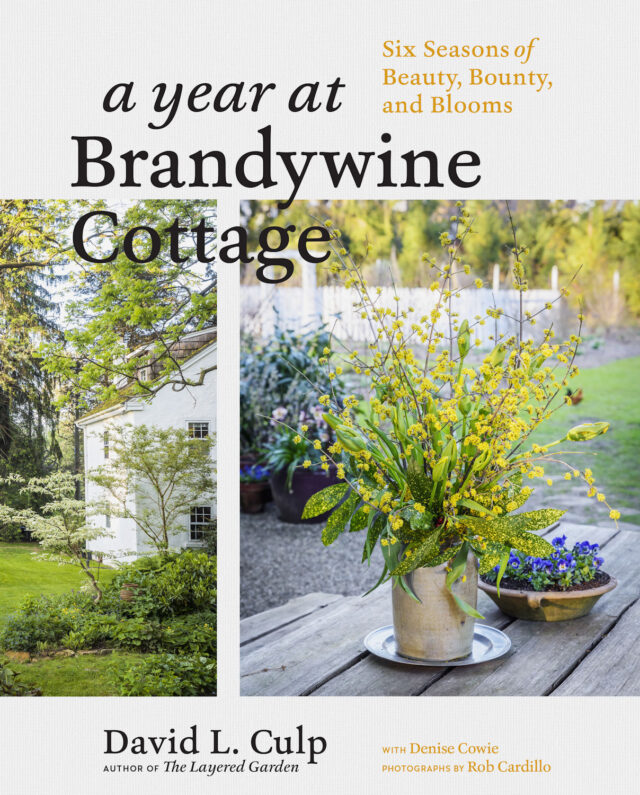
Spring is my favorite season, but it’s still January. My climate won’t see spring for a couple more months, so I pique my interest with gardening books. Layered Garden is one of my favorite gardening books. David Culp. I reviewed this book 7 years ago, and it is still one of my favorites. It’s a book I read at least once every year and sometimes more often, because of the beautiful photographs and the love for gardening that is evident in the writing.
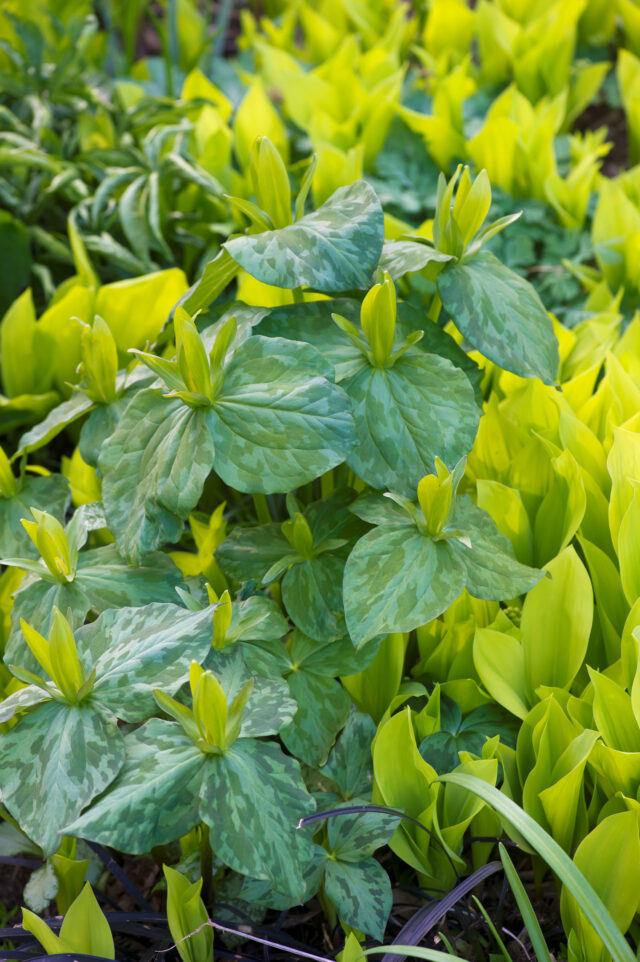
The book is a bit frustrating because the plants are not identified. The golden-leaved trillium luteum on page 38 is a beautiful combination with the yellow flowering lily of the valley, but what name does it have? The Layered Garden was not organized chronologically so it could be difficult to remember what happened when.
Enter Brandywine Cottage, A Year of Beauty, Bounty and Blooms David Culp’s second book is available via this link. This is the companion volume for The Layered Garden. A year at Brandywine Cottage, organized chronologically by season, is part gardening memoir and lifestyle inspiration. There are also some recipes included for good measure. Rob Cardillo’s photography is as beautiful as that in The Layered Garden and David’s writings are just as heartfelt and chatty.
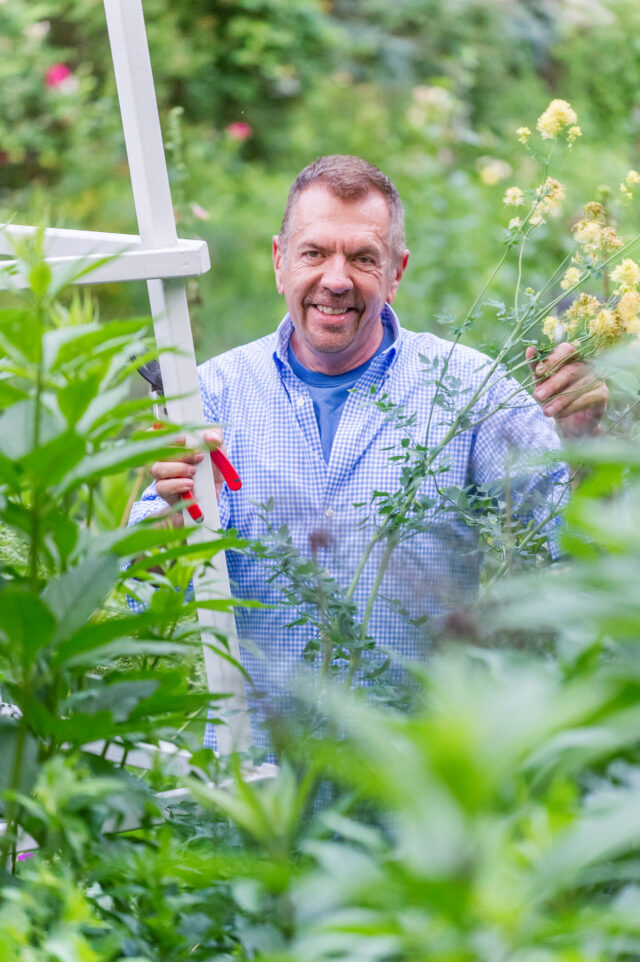
In October 2018, I visited David Culp at Brandywine Cottage to see his garden, just before his second book was published. David speaks with the same enthusiasm and passion that he displays in his books. You never know what plant will spark a story about how it got into his garden, or the day he thought it was particularly beautiful. Both books are rambling, as if he were talking to you.
A year at Brandywine Cottage features the Meadowette as the newest addition to his garden. An updated map appears on the endpapers. I love garden maps. I am adamant that every article or book about a garden should include a map. It would be even better if the perspective of each photo was marked on the map. This is only possible in an article. A garden map is a great way to help you understand the layout and orientate the photos.
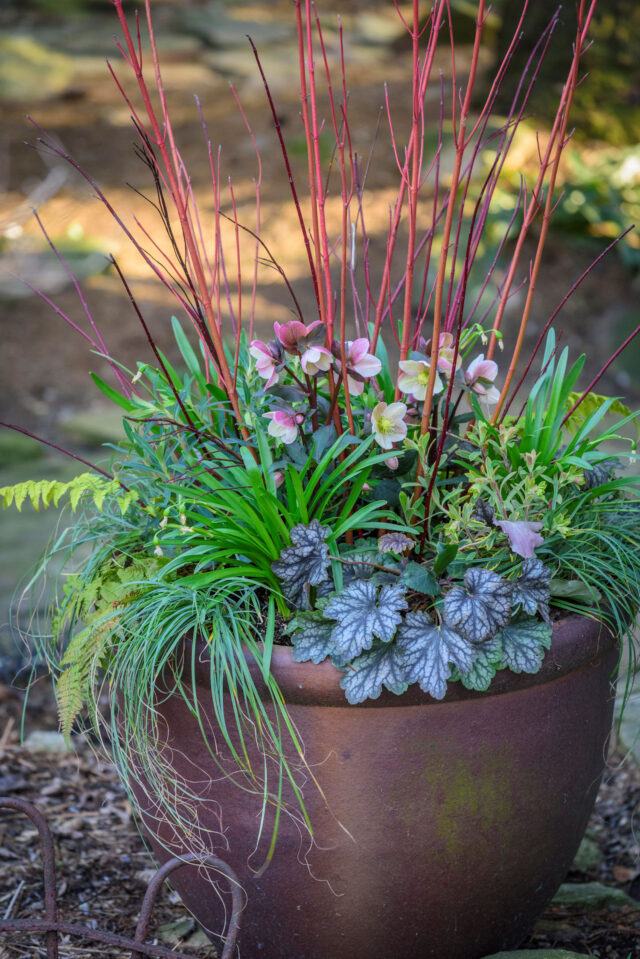
David Culp has six seasons: Early Spring, late Spring, summer, early fall, late fall, and winter. He gardens in USDA Zone 6b. The months in my colder climate are divided differently, but there is no difference in the sequence of flowering. February is spring to him but winter is still here. He gets snow but it is not a persistent cover. He has flowers in every month. His winter bloomers, the witch hazels and hellebores, don’t appear until March. There are enough plants that can be grown in both gardens to not make me jealous of the ones he is able to grow.
Each month has its own chapter. Each chapter includes a description of the month’s signature plant, a demonstration on how to use the bounty from the garden to create floral arrangements, still-lifes (which he calls “taborets”), and he shares some recipes. These recipes are based on his Pennsylvania Dutch heritage, or favorites of friends. They also feature ingredients that he grows himself. Black walnut cookies and ground cherry pie are among the interesting offerings.
After I finished reading A Year at Brandywine Cottage I wished that it had not ended. A keeper is one who makes you want more. You will want to read both if you’re in the winter doldrums. Now that I know, the golden-leaved Lily-of-the Valley is “Fernwood’s Golden Slippers,” the hunt begins!
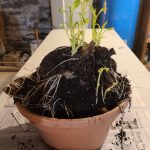






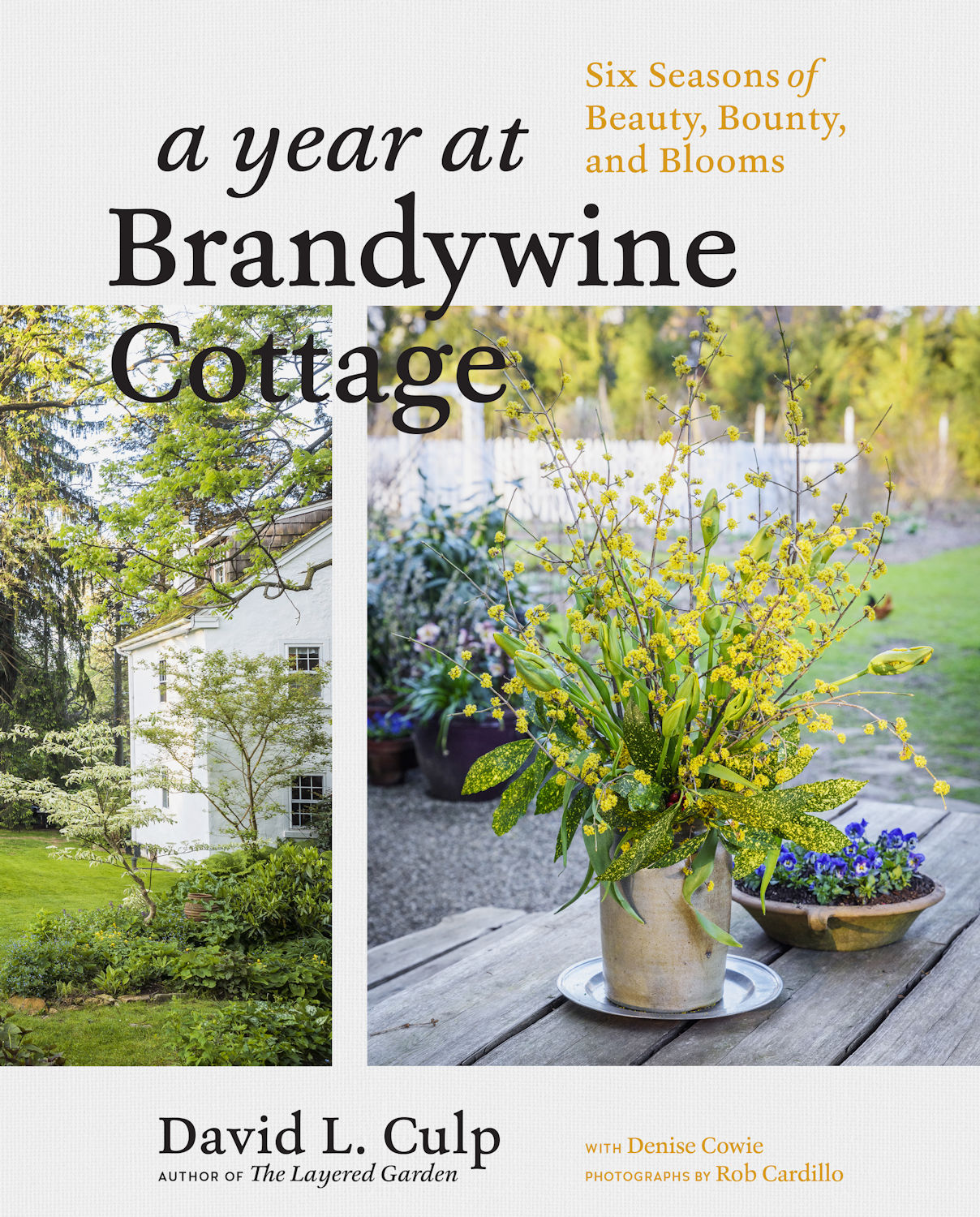
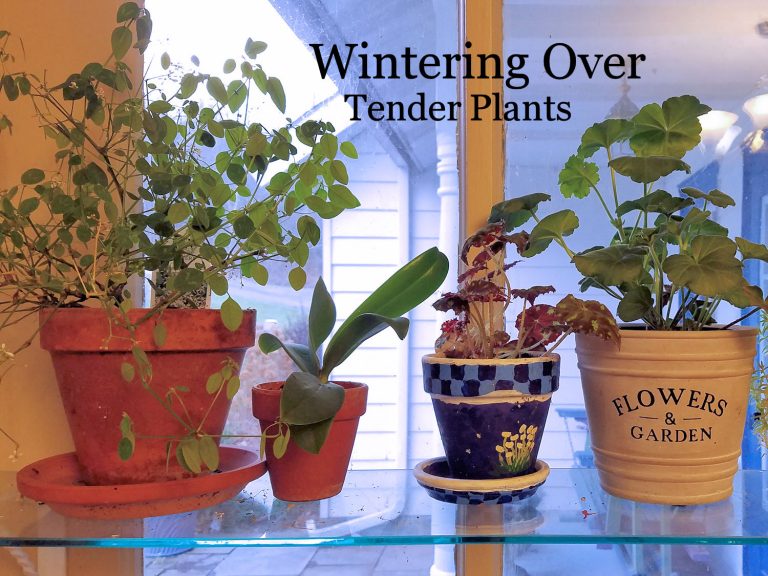
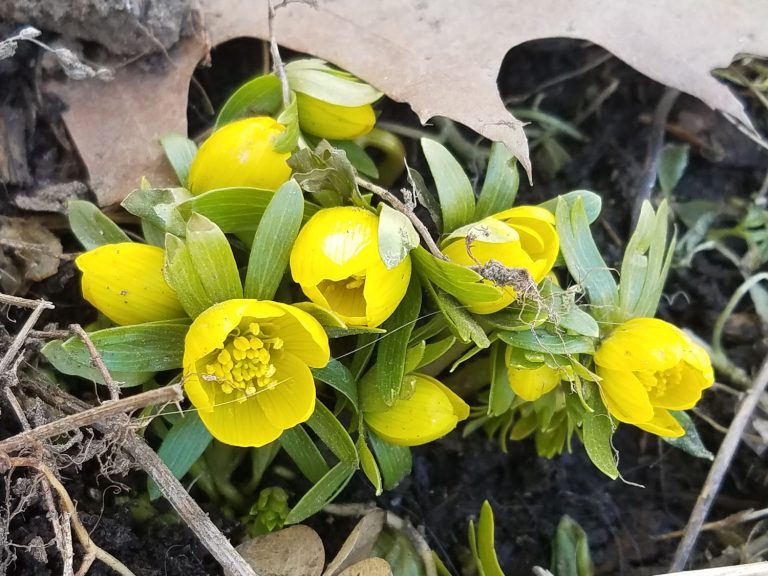

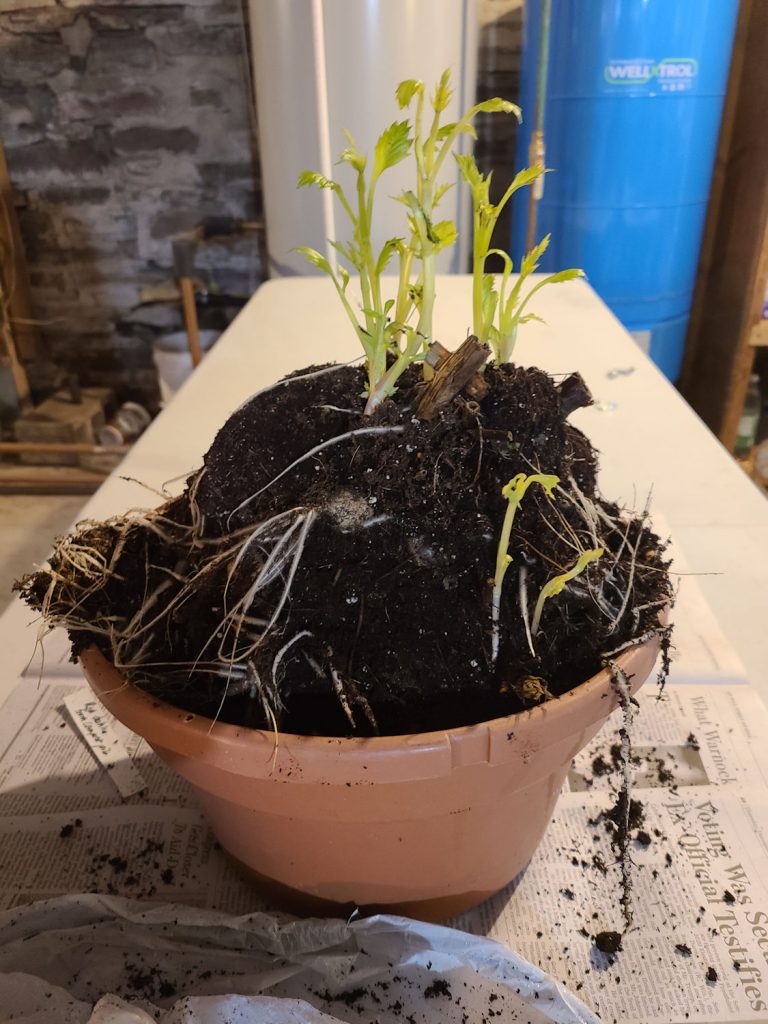
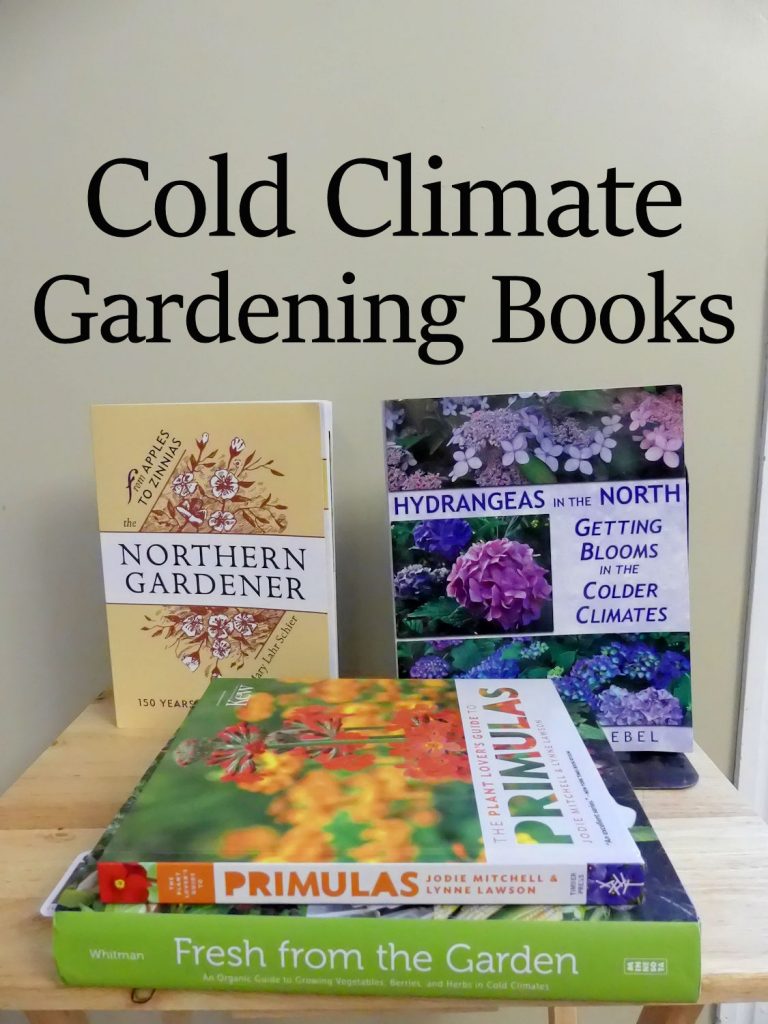
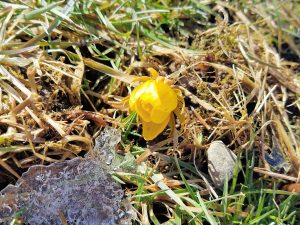
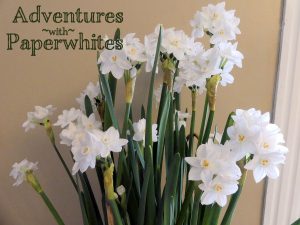
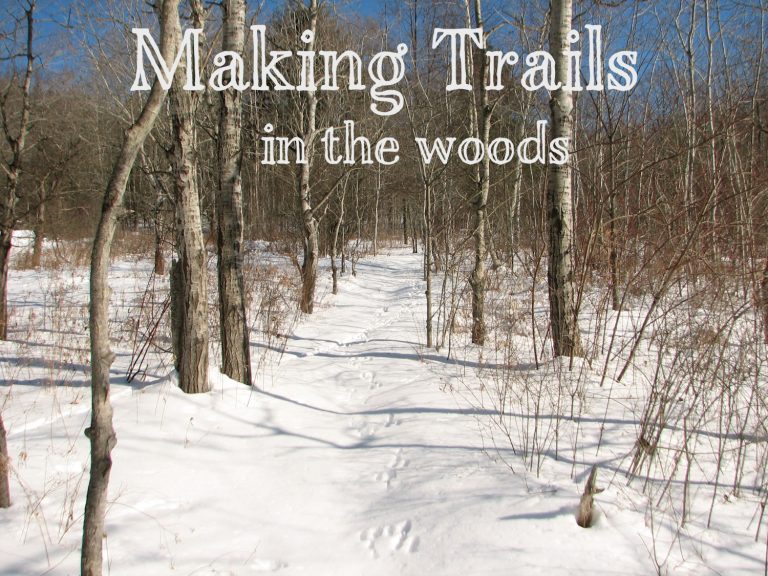
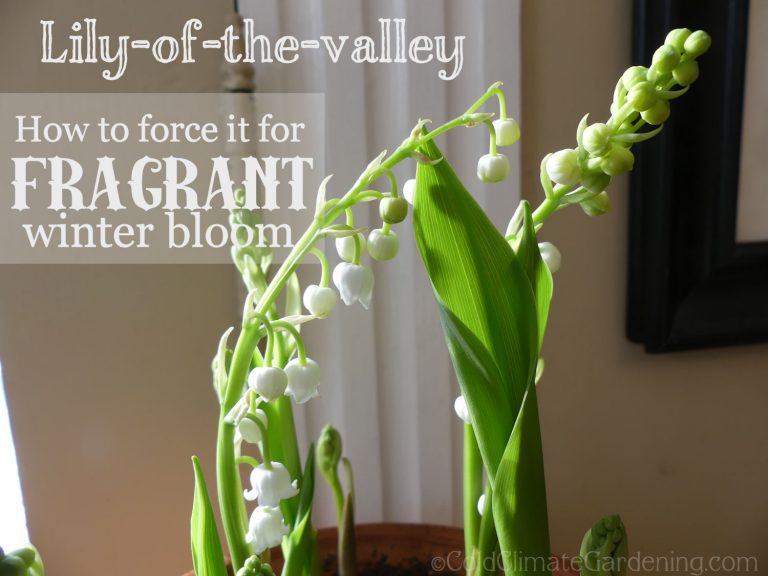
+ There are no comments
Add yours